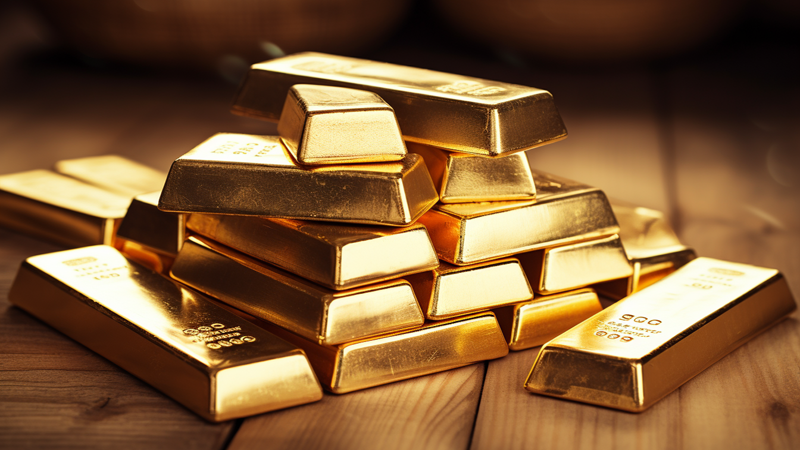Gold Prices
Understanding Gold Prices
Gold has long been revered as a symbol of wealth and prosperity. Its allure, stemming from its luster and rarity, has established it as a precious metal that transcends mere ornamentation to become a pivotal market commodity. This guide delves into the intricacies of gold prices, offering insights into the factors that influence its value and how it serves as a cornerstone for investors, goldsmiths, and jewelry enthusiasts alike.
The Dynamics of Gold Pricing
The price of gold is a reflection of a complex interplay between demand and supply, influenced by global market trends, inflation rates, and economic indicators. Gold’s value is often quoted per ounce in financial markets, serving as a benchmark for pricing in various forms, including bullion, coins, and jewelry. The spot price of gold—its rate for immediate delivery—fluctuates constantly, affected by trading activities around the globe. This volatility is a key consideration for investors who look to gold as a hedge against inflation and currency devaluation.
Gold as an Investment
Investing in gold can take multiple forms, from purchasing physical gold in the form of bullion or coins to buying gold ETFs (Exchange-Traded Funds) that track the price of gold. The allure of gold investment lies in its ability to retain value over time, making it a safe haven during periods of economic uncertainty. The price of gold per gram or ounce is closely watched by investors, as it provides critical insights into market trends and potential returns on investment.
The Role of Demand and Supply
The demand for gold, driven by its uses in jewelry, technology, and by central banks, significantly impacts its price. Jewelry accounts for a substantial portion of gold demand, with the craftsmanship of goldsmiths and the allure of gold jewelry pieces influencing consumer behavior. Conversely, the supply of gold, regulated by mining activities and recycling, also plays a crucial role in determining its price. The balance between demand and supply, coupled with speculative activities in gold markets, leads to price fluctuations that are closely monitored by investors and analysts.
Gold Purity and Valuation
The purity of gold, measured in karats, is a critical factor in its valuation, especially in the jewelry industry. Pure gold, known as 24-karat gold, is too soft for everyday wear, hence it is often alloyed with other metals to enhance its durability. The purity of gold affects its value, with higher karat gold being more expensive. Gold’s weight is another determinant of its value, typically measured in grams. The appraisal of gold, whether by a pawnshop or a professional appraiser, involves assessing its purity, weight, and current market value to determine its worth.
Latest Post
Gold Price Prediction: Bullish Trend Strengthens as New Resistance Level Approaches
Bullish Channel Breakout Confirmed An initial breakout of the channel triggered yesterday, and the day closed above the channel line. As can be seen marked on the chart with red and green...
Analyzing Gold Demand Trends in the Third Quarter of 2024
Copyright and other rights© 2024 World Gold Council. All rights reserved. World Gold Council and the Circle device are trademarks of the World Gold Council or its affiliates.Any references to LBMA Gold...
Gold price hits new all-time high
ADELLA HARDING Elko Daily Correspondent Gold Prices Surge Amid Global Uncertainty Gold’s luster sparkled even more on Tuesday, with a record New York spot price closing at $2,774.60 per ounce, up $32.80,...
Gold Price Surges to $2750/oz with Historic $3 Billion Inflows into Gold Funds
Gold prices surge past $2750 per ounce on record inflows into gold funds. Gold ETFs saw a massive $3 billion investment last week, the second-largest increase ever. Year-to-date gains for gold are...
Top 4 Gold Investing Mistakes to Avoid in November
Before investing in gold this November, it's critical to first understand some simple but easy-to-make mistakes. Getty Images The price of gold has been on a record run so far in 2024....
Best Time to Buy Gold: Shubh Muhurat, Date, Gold Prices, and More
Diwali festivities in India are set to begin with Dhanteras on Oct. 29. The day is considered auspicious for buying precious metals like gold and silver as it symbolises the welcoming of...
Factors influencing the increase in gold prices
The surge in the price of gold has been quite remarkable in recent times, with the precious metal experiencing a sustained rally throughout the year 2024. January saw gold trading at around...
Why is Newmont’s Gold Mining Dividend Stock Declining Despite Record High Gold Prices?
Gold's Performance in 2024 Gold prices have been hitting all-time highs in 2024, making it an attractive investment option for many. Despite this, shares of gold miner Newmont (NEM -1.69%) fell significantly...
Dundee Precious Metals: Strong Gold Production and Price Forecast – Opportunity for Investment
The Impact of Strong Gold Prices on Dundee Precious Metals Dundee Precious Metals (DPMLF) has seen significant benefits from the recent surge in gold prices. The increase in gold prices has been...
GoldPrices.org is your go-to resource for all things related to gold prices. This comprehensive website offers up-to-date information on current gold prices, providing valuable insights for investors and enthusiasts alike. Delve into the fascinating history of gold prices, explore insightful news, and analyze detailed charts and data. Whether you're a seasoned investor or just curious about the gold market, GoldPrices.org offers a rich repository of information to help you stay informed and make educated decisions.













